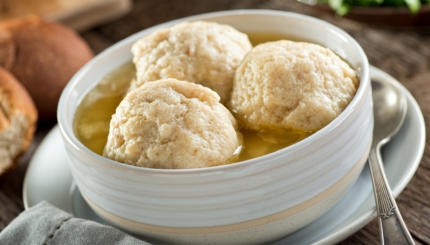The consumption of food and drink, considered one of the great joys of life in the Bible, is subject to a number of restrictions in the Torah‘s legal passages. Among the land animals only certain types of mammals—cud-chewing species with split hooves—and a very small class of insects are approved, or kosher, for consumption by the Israelites, to whom biblical law is addressed. Only certain types of fowl are similarly acceptable, and only their eggs among those of the birds are to be eaten. Among sea creatures, only fish with fins and scales may be consumed.
The flesh of acceptable mammals and fowl could be consumed, but not their blood. One additional restriction on consuming such meat is the ban on cooking a kid in its own mother’s milk.
Rabbinic Judaism elaborated a series of practices intended to provide the details of behavior for putting the biblical restrictions into practice. The rabbis of Judaism’s formative period laid out complex rules for the slaughtering of animals and for the removal of blood from meat by salting it and soaking it in water. Most notably, from the ban on cooking a kid in its mother’s milk, repeated three times in the Torah, the rabbis made a tripartite ban on combinations of the taste from the meat of a animal (even kosher fowl) with the taste of the milk of a kosher mammal. One is forbidden by rabbinic law to cook such a combination, to consume it, or to derive economic benefit from it in any way.
Over centuries of development, with popular practice influenced by the rulings of rabbinic authorities, these last restrictions developed into a system of separation articulated in great detail: separate sets of utensils for milk and meat, for example, and, in many homes, separate color-coded tablecloths, placemats, and dishtowels. Elaborate systems were developed for undoing (or letting pass) near-infractions of these rules—such as the accidental inclusion of a very small amount of milk in a meat dish, or vice-versa—or outright violations.

Help us keep Jewish knowledge accessible to millions of people around the world.
Your donation to My Jewish Learning fuels endless journeys of Jewish discovery. With your help, My Jewish Learning can continue to provide nonstop opportunities for learning, connection and growth.
In most cases, rabbinic rulings on the dietary laws developed in the direction of increasing stringency. The Babylonian Talmud, for example, bans the consumption of milk during a meal after meat has been consumed at that meal. The post-talmudic practices in various communities, though, range from waiting one hour to waiting as long as six hours after consuming food containing meat before consuming food containing milk.
New discoveries and new technologies have occasioned questions about the application of the principles of in medieval and modern times. The rabbis had extrapolated rules from the biblical lists of kosher fowl, but the turkey and the pheasant, once Jews were exposed to them, were the subject of debate and disagreement. The same is true of the swordfish, which shed their scales in adulthood and thus engendered debate, and the sturgeon. The properties of new materials used to produce cookware, such as Pyrex in the twentieth century, also raised questions about how to classify them, since different materials known earlier—metal, earthenware, fine porcelain, glass—are each subject to different rules.
Jewish law and practice are dependent on the state of knowledge in the larger society at any given time. This is illustrated in a most piquant fashion by the debates in medieval European Jewry about the barnacle goose, which was widely believed to grow like fruit from a tree or to grow from a tree by its beak. Various Jewish legal authorities declared it either permitted for consumption like a fruit, subject to the laws covering other fowl, or entirely forbidden for use as food.



